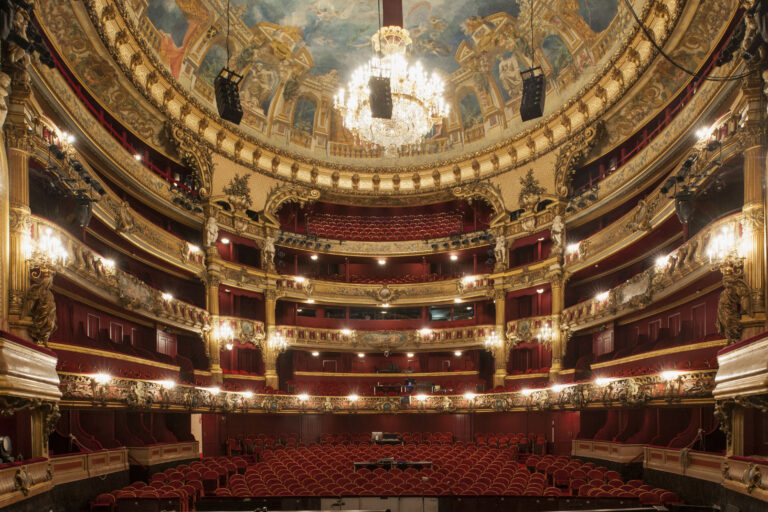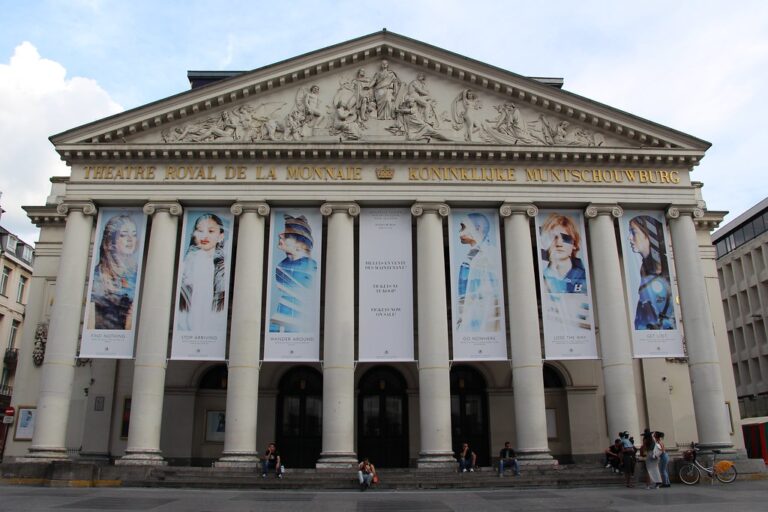

In the world of Opera, La Monnaie in Brussels serves as a good example of an institution that recognises its role in the global ecological transition. La Monnaie addresses the environmental footprint associated with opera production and performances by infusing sustainability into its artistic performances and operational practices. This encompasses not only the energy consumption of its buildings but also concerns like co-productions and show tours, transportation choices made by attendees, eco-friendly stage set designs, sustainable food options, and more.

The environmental crisis has become an integral part of the opera house’s identity and is seamlessly incorporated into the organisational strategy. La Monnaie Opera Theatre aims to harmonise its environmental and carbon reduction objectives with the 2030 targets established by the European Union.
Actions
– Green Opera House
– Green Opera Production
In 2023, they will be updating their carbon footprint based on 2022 data, looking in more detail at a series of aspects, including the CO2 analysis of 16 opera productions.
– 87% of staff travel by public transport (2019 figures), thanks to an internal policy of 100% reimbursement of public transport season tickets. The number of cyclists among La Monnaie‘s staff is steadily increasing, thanks to a covered and secure bicycle parking area with 54 spaces.
– La Monnaie has joined the Belgian Coalition for Sustainable Business Travel, launched by Bond Beter Leefmilieu, to define a sustainable travel policy by June 2024.
– La Monnaie has joined the Green Deal for Urban Logistics launched by the Brussels-Capital Region to find a storage location for sets closer to La Monnaie by 2025, which will reduce the impact of transporting them.
– From September 2023, the SNCB’s Bravo! Tickets will enable audiences to travel by train at half price on the dates of their shows.
– Multimodal information screens displaying real-time public transport timetables will also be installed in the Theatre’s entrance hall.
– In 2022, La Monnaie carried out two pilot projects aimed at reducing the use of cars to get to shows: the introduction of secure bicycle parking during performances and a shared shuttle booking system (Adamo). These projects will be evaluated in 2023 to analyse the conditions required to make them sustainable.
– By 2025, 50% of the materials (sets, props, costumes, etc.) must have had a previous life. Afterwards, 65% of the materials used must be reclaimed or recycled.
– When manufacturing products, they favour standard structures and elements from their stock as much as possible. This is a basic principle that they are trying to develop by initiating a dialogue with the artistic teams and other opera houses.
– Since 2017, the rehearsal sets have been made using as many elements as possible from their stock.
– With the Collectif 17h25, made up of the Festival d’Aix-en-Provence, the Paris Opera, the Opéra de Lyon, the Théâtre du Châtelet, and La Monnaie, they have launched a 3-year innovation project (2022-2025) aimed at standardising set structures (the invisible part of the set: frames, staircases, trolleys, etc.). All without altering the artistic creation.
– Eliminating heating in the corridors, limiting the temperature in the premises to 19°C, and eliminating the use of hot water in the washbasins.
– Limiting air conditioning, replacing obsolete and energy-guzzling installations, gradually replacing light fittings with lower-consumption models, etc.
– Installation of a system for real-time monitoring of gas, electricity, and water consumption, allowing them to detect and rectify equipment malfunctions and leaks.
– Installation of a central technical management system connected to the house’s timetables, which has made it possible to rationalise the use of spaces (by activating the installations only when the rooms are actually being used.)
– La Monnaie is also developing an Energy-Climate Plan to measure the energy needs and carbon footprint of all its buildings in detail to arrive at targeted actions.
– La Monnaie co-founded the InLimbo platform, which enables the exchange of materials within the socio-cultural industry.
– From time to time, they organise sales of our costumes, which are open to the public and enable us to recycle almost all of them.
– In 2020, they reviewed all office sorting areas to make them more visible more consistent, and to reduce the share of general waste.
– Sustainable canteen, with non-profit organisation Groot Eiland, uses fresh, unprocessed, fair-trade produce, seasonal organic fruit and vegetables, and MSC-certified fish. A vegetarian alternative is offered daily, and the buffet is entirely vegetarian on Thursdays. The focus is on short distribution channels, preventing food waste, and reducing animal protein in our meals.
All rights reserved | comms.projectbutterfly@gmail.com| Privacy policy